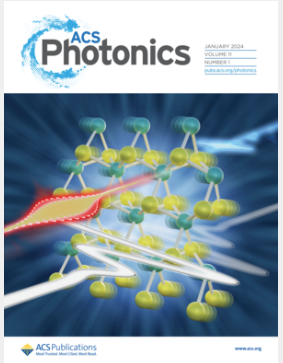Breaking the Electric-Dipole Selection Rule via a Plasmonic Nanocavity Excited by a k-Space Filter-Assisted Radial Vector Beam
IF 6.5
1区 物理与天体物理
Q1 MATERIALS SCIENCE, MULTIDISCIPLINARY
引用次数: 0
Abstract
Breaking the electric-dipole selection rule in molecular spectroscopy is of great significance for manipulating vibrational state transitions and developing unconventional photofunctions of molecules. In this study, a static plasmonic nanocavity composed of a gold (Au) nanosphere on a silver (Ag) substrate was excited using a radial vector beam with a tunable spatial frequency component. The resulting nanocavity-plasmonic mode has a significantly enhanced electric-field gradient to visualize the electrical-quadrupole transition in the molecule. The static plasmonic nanocavity is tunable by regulating the spatial frequency component of the excitation beam. Thus, the interaction between the electric field/electric-field gradient of the nanocavity-plasmonic mode and the molecular polarizabilities has been accurately identified. This innovative nanospectral platform provides unique opportunities for studying weak physical and chemical processes in molecules.

通过 k 空间滤波器辅助径向矢量光束激发的质子纳米腔打破电偶极选择规则
本文章由计算机程序翻译,如有差异,请以英文原文为准。
求助全文
约1分钟内获得全文
求助全文
来源期刊

ACS Photonics
NANOSCIENCE & NANOTECHNOLOGY-MATERIALS SCIENCE, MULTIDISCIPLINARY
CiteScore
11.90
自引率
5.70%
发文量
438
审稿时长
2.3 months
期刊介绍:
Published as soon as accepted and summarized in monthly issues, ACS Photonics will publish Research Articles, Letters, Perspectives, and Reviews, to encompass the full scope of published research in this field.
 求助内容:
求助内容: 应助结果提醒方式:
应助结果提醒方式:


